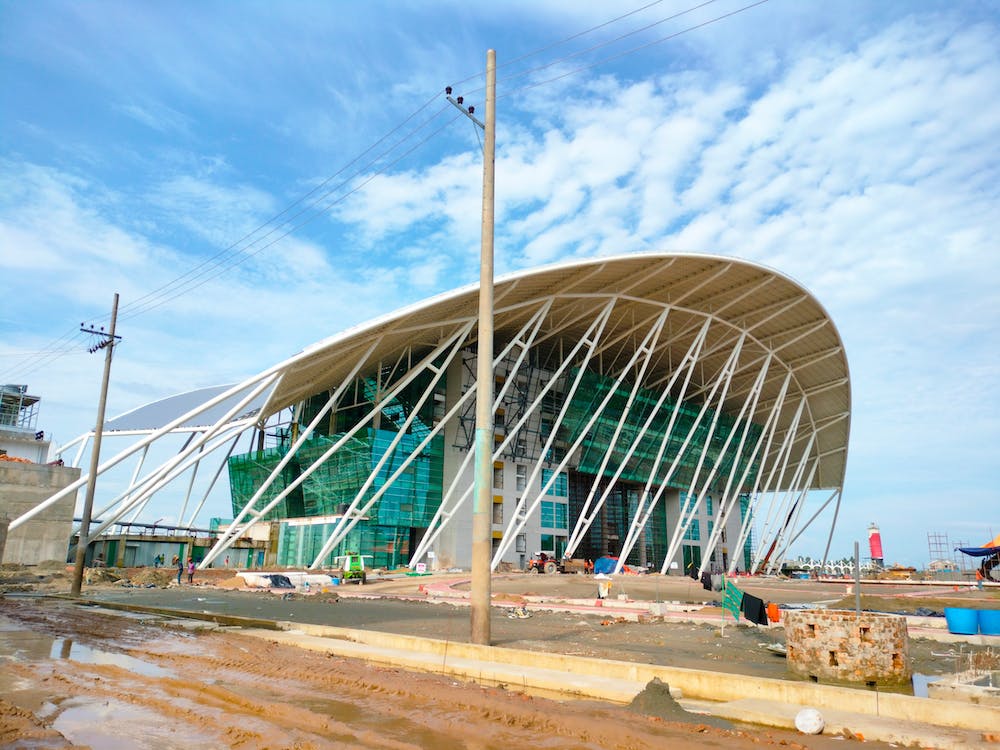The construction industry in Australia is a dynamic and vital sector that plays a pivotal role in the nation’s economic growth and development. It shapes the physical landscape of cities and regions, providing essential infrastructure, homes, and commercial spaces. However, the construction industry does not operate in isolation; it is profoundly influenced by regulations and government policies. In this blog, we will explore the significant impact of regulations and government policies on the Australian construction sector.

The Regulatory Landscape in Australian Construction
Australia boasts a robust regulatory framework governing the construction industry. These regulations are designed to ensure safety, quality, environmental sustainability, and compliance with various standards. Key regulatory bodies at the federal and state levels oversee different aspects of construction. Let’s examine some of the primary regulatory aspects that influence construction in Australia:
Building Codes and Standards
The National Construction Code (NCC) stands as the cornerstone of Australia’s construction industry, serving as an indispensable document that not only sets forth the technical standards and requirements but also weaves together the intricate tapestry of regulations that govern construction practices across this vast continent. This multifaceted code encompasses a broad spectrum of critical areas, leaving no stone unturned in its quest to uphold the pillars of safety, quality, and environmental sustainability in the construction sector.
One of the primary facets meticulously addressed by the NCC is structural integrity, an aspect that forms the very backbone of any construction endeavour. It meticulously outlines the engineering and design standards, load-bearing capacities, and durability criteria that ensure that buildings can withstand the test of time and the challenges posed by Australia’s diverse climatic conditions.
Additionally, the NCC extends its protective mantle to encompass fire safety measures, recognizing the critical importance of safeguarding lives and property. Through stringent requirements for fire-resistant materials, fire escape routes, and smoke control systems, it sets a formidable line of defence against the devastating impact of fires.
The NCC also delves into the realm of energy efficiency, recognizing that the construction industry holds a pivotal role in reducing Australia’s carbon footprint. It prescribes standards for insulation, heating, cooling, and lighting systems to promote sustainability and reduce energy consumption. These regulations align with the broader national objectives of environmental conservation and mitigating the effects of climate change.
Furthermore, the NCC leaves no faucet unturned in addressing plumbing standards, ensuring the safe and efficient distribution of water and the effective management of waste. It stipulates requirements for plumbing fixtures, water conservation, and sanitary drainage systems, contributing to a sustainable approach to water usage in construction.
Accessibility is yet another vital dimension encompassed by the NCC. Acknowledging the importance of inclusivity, it outlines provisions for accessible design and construction practices, ensuring that buildings and facilities are accessible to all members of society, including those with disabilities.
What sets the NCC apart as a dynamic and enduring document is its commitment to continuous improvement and evolution. In recognition of the ever-changing landscape of construction practices and the emergence of new technologies, the NCC undergoes regular updates. These updates serve as a testament to its adaptability, aligning it with evolving industry practices and safety standards. This commitment to growth and refinement underscores the NCC’s enduring significance as a guiding beacon in Australia’s construction industry, ensuring that it remains at the forefront of promoting safety, quality, and sustainability in construction practices.
Occupational Health and Safety
Ensuring the safety of construction workers and the public is paramount. Each state and territory in Australia has its occupational health and safety (OHS) regulations, governing workplace safety practices. The aim is to reduce accidents, injuries, and fatalities in the construction sector.
Environmental Regulations
Australia has stringent environmental regulations aimed at protecting the environment and minimising the impact of construction activities. These regulations encompass areas like waste management, pollution control, and the preservation of ecologically sensitive areas.
Planning and Zoning Laws
Local councils and state governments have planning and zoning laws that dictate land use, building height, density, and design. These laws help shape urban development and ensure that construction projects align with community and environmental goals.
Building Approvals and Permits
Before commencing construction, developers and builders must obtain various approvals and permits. This process ensures that construction plans meet regulatory standards and comply with local building codes.
Government Policies Shaping Construction
Government policies are instrumental in shaping the construction landscape in Australia. These policies are often influenced by economic, social, and environmental considerations. Let’s delve into the key government policies that have a significant impact on construction:
Infrastructure Investment
Governments, at both the federal and state levels, invest heavily in infrastructure projects. These investments stimulate economic growth, create jobs, and improve public services. Major infrastructure projects include roads, bridges, airports, public transport, and utilities.
Affordable Housing Initiatives
Australia faces challenges related to housing affordability. Governments implement policies and initiatives to address this issue, which includes funding for affordable housing projects, incentives for first-time homebuyers, and rent control measures.
Sustainability and Renewable Energy
Sustainability is a priority for the Australian government. Policies promote energy efficiency in buildings, renewable energy adoption, and sustainability certifications such as Green Star and NABERS (National Australian Built Environment Rating System).

Indigenous Participation and Inclusion
The government encourages the inclusion of Indigenous communities in construction projects through policies and initiatives. This includes Indigenous employment and business participation programs, fostering collaboration with Indigenous-owned businesses.
Trade and Industry Development
International trade agreements and policies influence the availability of construction materials and the competitiveness of Australian construction companies. Trade agreements can affect construction costs and project timelines.
The Impact of Regulations and Policies on Construction
The influence of regulations and government policies on the Australian construction sector is profound and multifaceted. Here’s how these influences manifest:
Safety and Quality Assurance
Regulations and OHS standards prioritise the safety of construction workers and the quality of construction projects. Compliance with these regulations is non-negotiable and requires rigorous adherence.
Environmental Responsibility
Environmental regulations compel construction projects to adopt sustainable practices, minimise waste, and reduce their carbon footprint. Sustainability certifications and energy efficiency requirements are integral to these efforts.
Project Planning and Design
Zoning laws, planning regulations, and building codes dictate project design and development. Compliance with these policies ensures that construction projects align with community needs and environmental goals.
Compliance Costs
Meeting regulatory requirements can add costs to construction projects. Compliance with building codes, safety standards, and environmental regulations necessitates investment in materials, technology, and skilled labour.
Market Opportunities
Government policies supporting infrastructure investment and affordable housing initiatives create market opportunities for construction companies. These policies drive demand for construction services and create employment opportunities.
Innovation and Sustainability
Government policies that incentivize innovation, renewable energy adoption, and sustainable construction practices drive the industry toward sustainability and technological advancements.
Infrastructure Investment in Australia
One of the most notable examples of government policy shaping construction is the significant infrastructure investment made by the Australian government. Infrastructure projects, including road and rail networks, airports, and public transport systems, receive substantial funding. This investment not only stimulates economic growth but also has a direct impact on the construction industry. It creates job opportunities, fosters innovation in construction techniques, and contributes to the overall development of urban and regional areas.
For instance, the Sydney Metro project, which includes the construction of new metro rail lines and stations, has been a major beneficiary of government infrastructure funding. This project aims to improve public transport in Sydney, reduce congestion, and enhance connectivity across the city. It has provided significant employment opportunities for construction workers and boosted related industries, such as construction materials manufacturing and logistics.
Challenges and Considerations
While regulations and government policies play a vital role in shaping the construction industry, they also present challenges and considerations:
Compliance Costs
Meeting regulatory requirements can increase project costs. Construction companies must allocate resources for compliance, which can impact project budgets and profitability.
Project Delays
Stringent regulatory processes and permit approvals can lead to project delays. Delays can result in increased costs and impact project timelines.
Market Uncertainty
Government policies, especially those related to renewable energy and sustainability, can be subject to changes with political shifts. Construction companies must adapt to evolving policies and regulations.
Skilled Labour Shortages
High demand for construction workers due to infrastructure projects and housing initiatives can lead to skilled labour shortages. This can affect project schedules and budgets.
Environmental Impact Assessment
Projects must undergo environmental impact assessments to comply with environmental regulations. These assessments can be time-consuming and may require adjustments to project plans.
Future Trends in Australian Construction Regulation and Policy
As the construction industry evolves, several trends in regulation and policy are expected to emerge:
Sustainability Mandates
There will be an increased focus on sustainability, with regulations requiring stricter adherence to green building standards and renewable energy integration.
Digital Transformation
Regulatory processes may become more streamlined and digitised, with the adoption of technologies like Building Information Modeling (BIM) for project planning and approvals.
Innovation Incentives
Government policies may provide incentives for innovation in construction practices, encouraging the use of advanced materials and technologies.
Resilience and Disaster Preparedness
Policies may be developed to enhance construction resilience against climate-related events, such as bushfires and floods, to protect communities and infrastructure.
Affordable Housing Solutions
Governments are likely to continue exploring policies aimed at increasing housing affordability, potentially through increased funding for affordable housing projects.
The Australian construction industry operates within a framework heavily influenced by regulations and government policies. These regulations ensure safety, quality, and environmental responsibility while also creating market opportunities and addressing societal needs. As the industry continues to evolve, construction companies must adapt to changing regulations, embrace sustainability, and innovate to thrive in a dynamic and highly regulated environment. Understanding the intricate interplay between regulations, policies, and construction is crucial for success in this vital sector, one that shapes Australia’s future and sustains its growth and development.
A good construction software makes use of good project management functionality, estimate and financial/accounting tool functionality, job management, scheduling and planning and support functionalities and more. WunderBuild is a construction management software that aims to provide all of these functionalities and more to bring out the best outcomes for a project. Enquire here today, to learn more about Wunderbuild and start your free trial.



